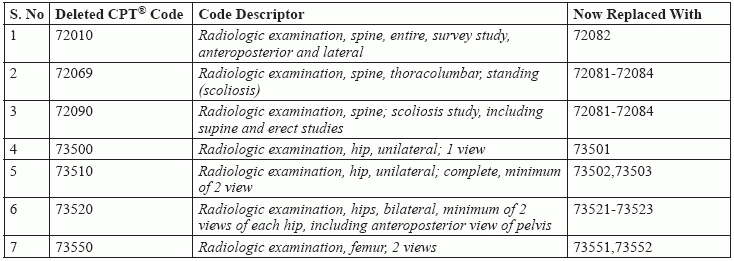
Enjoy as S23.3XXA allows for more number of patient visits.
Sprains and strain are among the most common injuries in chiropractic patients. With ICD-10-CM’s arsenal of countless codes you have the advantage of capturing greater details and specificity.
“By having access to more specific codes, it allows us the opportunity to create a better treatment plan,” envisions Elizabeth Earhart, CPC, with Godshall Chiropractic in Millersville, PA. What’s more, “some codes have higher values (per CMS) that allow the chiropractor to document and create a better plan of action.”
We bring you an update on the distinct code options you have when it comes to thoracic sprains and strains.
Don’t Let Thoracic Sprain and Strain Drain You
In ICD-9-CM, to report the strains and sprains of thorax, you had to resort to 847.1 (Thoracic sprain). This was essentially a “blanket” code that included avulsion, hemarthrosis, laceration, rupture, sprain, strain, tear of joint capsule, ligament, muscle, and tendon related to the thorax. Another code you sometimes reported was 848.8 (Other specified sites of sprains and strains).
However, in ICD-10, we have multiple specific codes that more precisely describe the anatomical location of the injury.
Thoracic strain: ICD-10 includes more than 12 codes exclusively for strain of the thorax.
In the broad category S20-S29 (Injuries to the thorax), the S29.01 category represents “Strain of muscle and tendon of thorax.” Nine more codes allow a more detailed description of the strain, including whether it is in the front or rear aspect of the thorax, and an unspecified code in case the provider does not mention the site. The digit after the decimal point represents the subcategory code describing the site, etiology, manifestation, or state of the disease or condition.
Thoracic sprain: Thoracic sprain has exclusive codes reserved for itself. In the broad category S20-S29 (Injuries to the thorax), S23._ represents dislocation and sprain of the joints and ligaments of the thorax. Again, nine additional codes allow a more detailed description of the sprain, and an unspecified code to designate in case the provider does not mention the site. The seventh character can assume value A, D, or S, depending on whether the patient presents for an initial encounter, subsequent encounter, or a sequela (a condition resulting as a consequence of the injury). For example:
Good news: “If you are familiar with the LCD (local coverage determination), certain diagnosis codes are assigned to groups,” explains Earhart. “Certain groups allow for more manipulations. Group M54.6 for pain in the thoracic spine would only allow 12 visits, but S23.3XXA for an initial encounter to treat sprain of ligaments of thoracic spine would allow for 18.”
Grip the rib sprains: So, what are you options if you encounter a patient with rib sprain for the first time? For your reference, ICD-9 code 848.3 (Sprain of ribs) included many things (chondrocostal joint, costal cartilage without mention of injury to sternum, avulsion, hemarthrosis, laceration, rupture, sprain, strain, tear of joint capsule, ligament, muscle, tendon related to the ribs). Now you have a very specific diagnosis, S23.41XA (Sprain of ribs, initial encounter), as your answer.
Here’s how your specificity tree branches out. In the broad category S20-S29 (Injuries to the thorax), you choose subcategory S23.4 (Sprain of ribs and sternum) and pick S23.41 (Sprain of ribs) specifically. You have three options as is usual for the injury codes: S23.41XA/D/S (Sprain of ribs; initial encounter/ subsequent encounter/ sequela).
Explore the Possibilities Within Sternum Sprains
The chart here says it in short: we have a one-to-one transition of the ICD-9 codes for sternum sprains to their ICD-10 counter parts, except that ICD-10 brings in more specificity with three options per code to choose from. These updated options in ICD-10-CM come with reference to the encounter (initial, subsequent, or sequela).
Caution: There is something about laterality that is missing here in the new codes as well. How do we code distinctly for the sprains of left versus right sternoclavicular joint? There seems to be no mention of it, almost similar to the fact that the codes for spinal injuries also do not take laterality into account.
“Such an emphasis was made on laterality for so many other codes, that it seems a waste we’re not doing it more,” Earhart observes. “I would still make sure it is documented in the records.”
Final takeaway: “Know your LCDs and know your anatomy,” reiterates Earhart. “Both will help you code correctly and precisely.”
Editor’s note: In our next issue look for the coding nuances of lumbosacral injuries.

